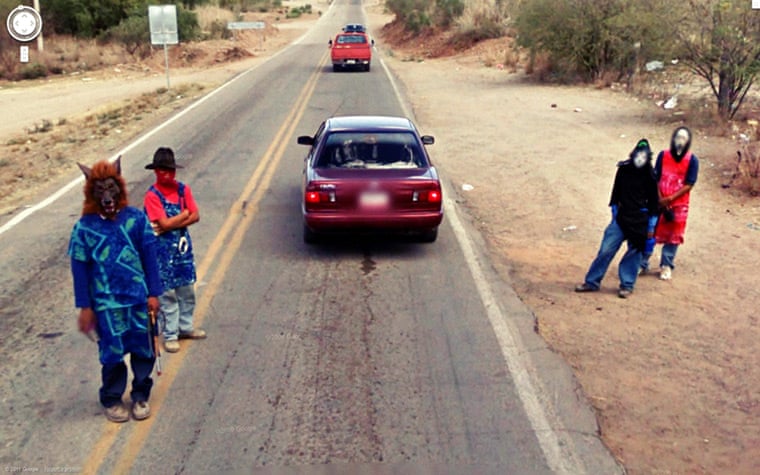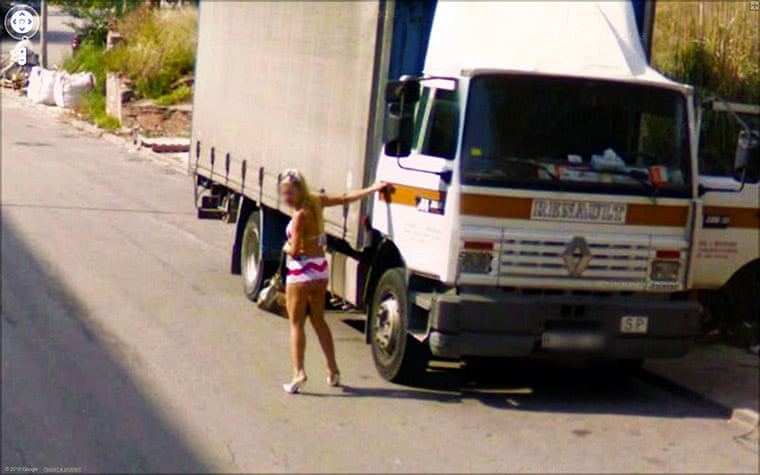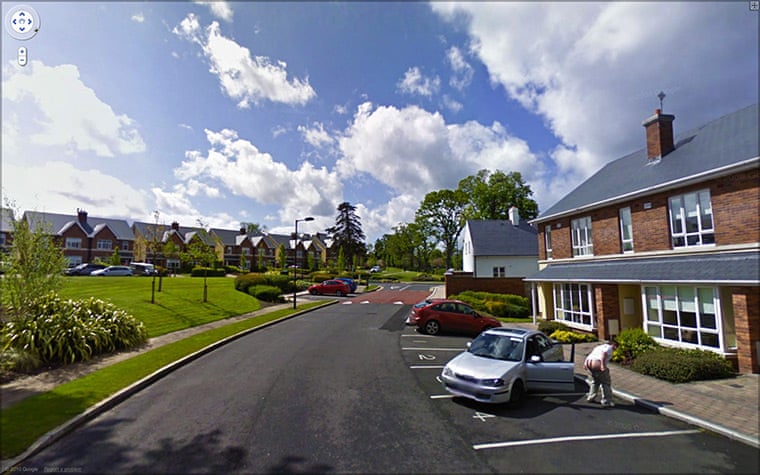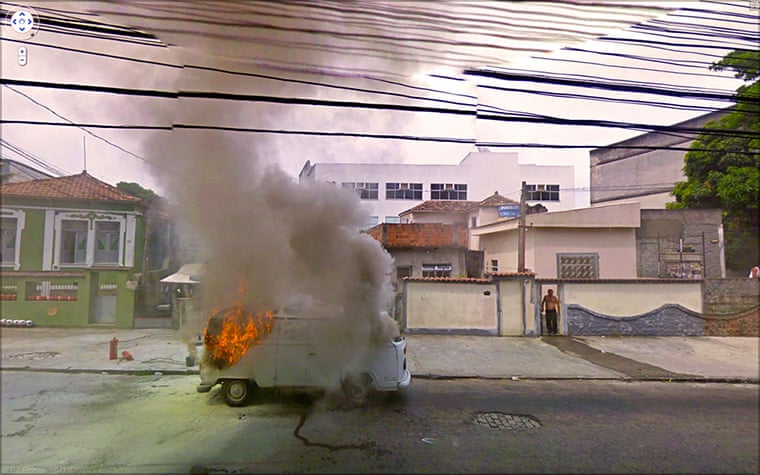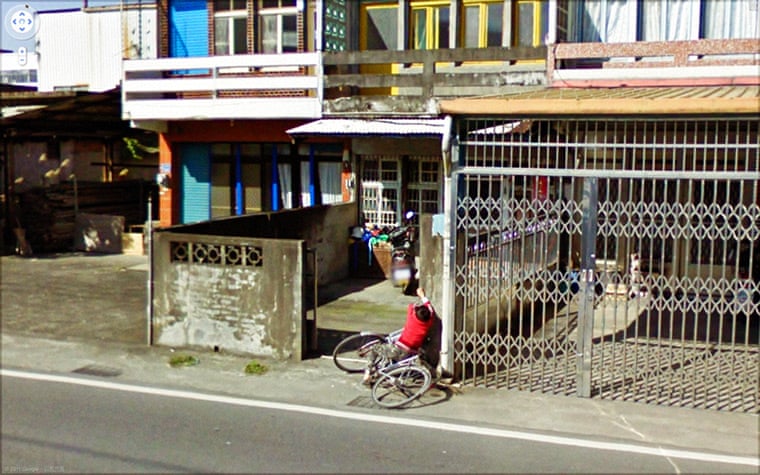
In the age of smartphones, automation and AI, it is difficult to imagine a world without Google Maps. Just how would we navigate, at home or abroad, without the reassuring blue GPS dot marking our every move? It is remarkable how technology that once had the power to amaze so quickly becomes the norm, absorbed into the fabric of our day to day lives. Google Maps was launched in 2005, with Google Street View following shortly afterwards in 2007. Street View aims to capture information with a view “to organize the world’s information and make it universally accessible and useful”—as outlined in Google’s mission statement. Initially limited to a few streets in the United States, it has since expanded to cover almost every corner of the earth.
With Nine Eyes of Google Street View, launched in 2008, Jon Rafman set out to explore this new digital terrain. For the project, Rafman applied an artist’s gaze to the all-seeing nine eyes of Google (named after the nine cameras mounted by Google on the vehicles used to capture the data), trawling through the imagery in search of the unusual and the unexpected. From this immense database he began to build a picture that looked very different to the corporation’s vision of the world’s cities and streets. While the cameras are programmed to capture anything and everything in their path, Rafman selects moments of disruption amidst this uniformity.
Men and women from all walks of life cavort, stumble and lie spread-eagled in Rafman’s selection. Some crouch by the side of the road, staring blankly at the Google cameras, while others stand by oblivious. In one image, a van goes up in flames as its owner rushes out to salvage the disaster; teenagers in masks loom threateningly in another. This is a cross-section of humanity, spread out on the internet for all to see. Rafman both celebrates and denigrates this slice of the world around us, digging into its depths and finding a writhing mass of oddities and absurdities.
“Rafman both celebrates and denigrates this slice of the world around us, digging into its depths and finding a writhing mass of oddities and absurdities online pharmacy buy cialis-soft online cheap pharmacy “
Rafman has published these isolated snapshots on blogs, as PDFs, in books, and as large C-prints for exhibitions in galleries, and the project remains ongoing just over a decade on. A comment on both the process of image-making and the nature of photography in the digital age, it raises obvious and pressing questions around authorship and ownership—as well as the pervasive nature of surveillance in our daily lives. In some of the more degrading images of ordinary people (in one, a man exposes his buttocks as he crouches by the side of his car), there are issues of consent to be reckoned with.
It is fitting for an artist who has made a habit of combing the darker side of the internet, whether in chat rooms, forums or user-based video platforms, to find human interest in the cold neutrality of the machine. Rafman searches for glimmers of hope amidst the debasement and stupidity of people online, and Nine Eyes of Google Street View is no different. Amidst the humour and the strangeness are moments of beauty; wild animals run alongside the camera, and abstract glitches reveal the materiality of the medium.
Google Street View aims to canvas the entire world, building a portrait of its population that is far-removed from the classically trained eye of the heyday of street photography, from Henri Cartier-Bresson to Joel Meyerowitz. It is a mammoth, ridiculous undertaking that calls to mind a Jorge Luis Borges short story, On Exactitude in Science (1946), in which a group of cartographers take on the doomed task of building a one-to-one scale map of the world, until map and territory become indistinguishable from one another.
Rafman uncovers cracks in Google’s own immense map, reintroducing the human eye to the automation of the omnipresent machine. The results are sad, funny and bizarre in equal measures—much like the world around us.
